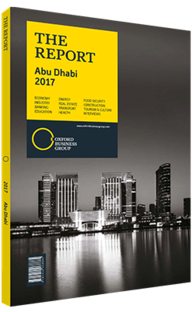Dean Kern, Middle East Tax and Legal Services Leader, PwC: Viewpoint

Viewpoint: Dean Kern
As a business centre for the MENA region, the UAE continues to be a highly relevant and attractive destination for investors for a number of reasons including infrastructure, logistics and access to skilled labour. According to the PwC and World Bank’s “Paying Taxes” 2017 study, the UAE is the country with the single easiest system for paying taxes in the world.
In a region where more than 50% of government revenues come from oil and gas, the reduction in oil prices and the associated budgetary pressures has led to increased speculation that taxation reform will take place in the UAE. The UAE is looking to implement a value-added tax (VAT) system on January 1, 2018. A broader corporate income tax (CIT) regime may follow in due course, however there is currently no timetable for its introduction. VAT is an indirect tax on the consumption of goods and services, and it can provide a sustainable approach for governments hoping to increase their revenue generation, while at the same time being neutral for business and limiting distortions in the economy. VAT is levied at all stages of the production and distribution chain at a relatively low administrative cost. It is neutral for businesses who would be acting as tax collectors as they do not bear the burden of VAT, as cumulative taxation is avoided through the right to deduct/refund input VAT.
The GCC states, including the UAE, have been studying the potential implementation of a VAT system and have agreed to introduce a common VAT framework, which can be adopted at a national level as early as January 1, 2018 by some of the GCC member states, with the others to follow by January 2019 at the latest.
Although from a business perspective VAT should not create an additional tax cost, businesses can still prepare to comply in terms of charging, collecting and paying VAT to governmental tax authorities. As VAT will impact the whole business, there are a number of factors that should be considered for a successful VAT implementation. The main issue is ensuring that the correct systems and processes are in place to cater for VAT in an efficient way — applying the correct VAT treatment and generating the required documentation. It will be easy to underestimate the additional workload and resources that will be required for implementation and the strain that this may place on tax and finance departments.
Investment in technology or upgrading existing systems to automate tax processes will need to be a part of the VAT implementation strategy, as this will improve accuracy while also saving time and money.
Alongside investment in technology, there also needs to be further development in employee training in all the necessary business units. It will be important to ensure an effective plan is in place to manage the additional compliance requirements.
In a region which has historically seen less investment in tax functions, the introduction of VAT will likely prove a catalyst for not just additional resourcing, but also having in place an appropriate tax framework to manage tax risks incorporating governance, tax strategy, tax risk registers and improved systems.
For the government there is an opportunity to build a leading global tax administration. The more they can provide clarity in the application of the laws, use systems to reduce compliance efforts and embrace new models for conducting audits, the greater the success of any VAT implementation will be. For companies that are headquartered in the UAE and operating globally, the increased attention given to corporate taxes and perceived tax avoidance in Europe, US and other parts of the world does mean careful consideration needs to be given to how taxes are managed.
In short, globally the management of taxes has never been more prominent in corporate, government and public interest circles, a situation that is increasingly the same in the UAE. The government and companies can use appropriate frameworks and channel resources into helping to simply the tax system.
You have reached the limit of premium articles you can view for free.
Choose from the options below to purchase print or digital editions of our Reports. You can also purchase a website subscription giving you unlimited access to all of our Reports online for 12 months.
If you have already purchased this Report or have a website subscription, please login to continue.

